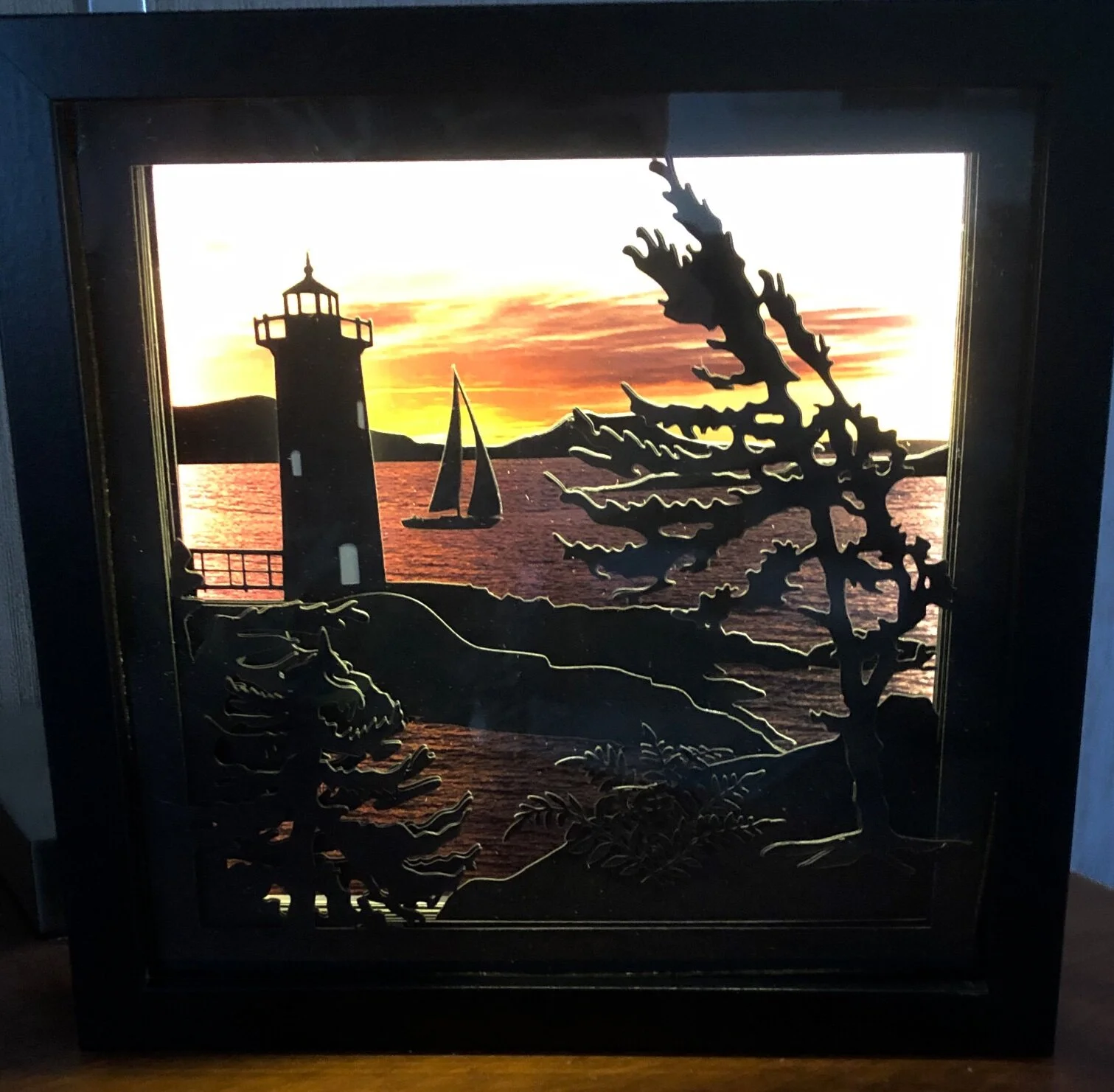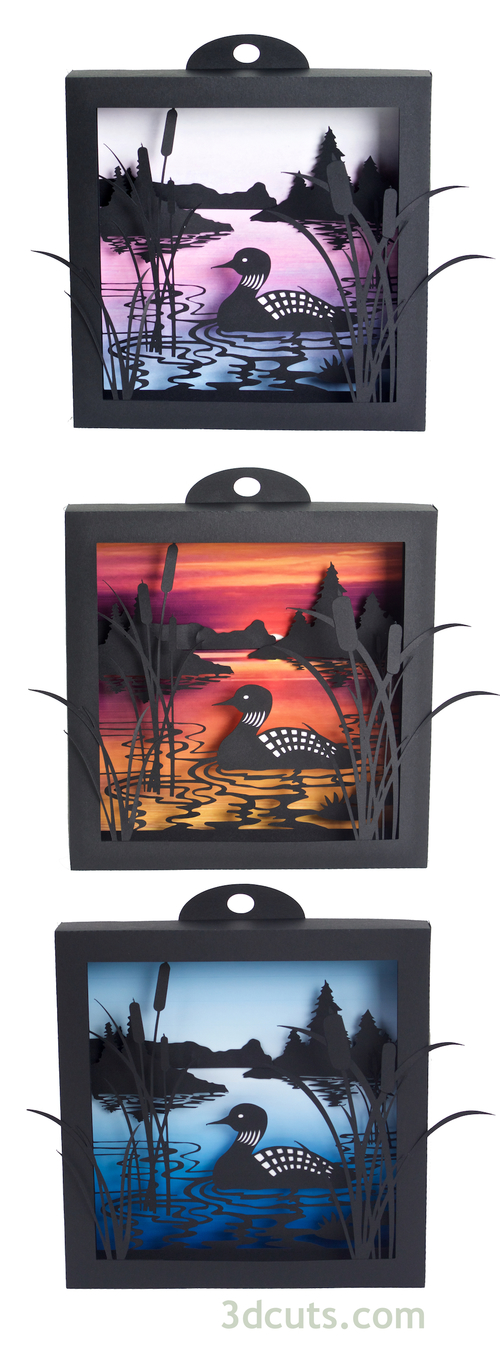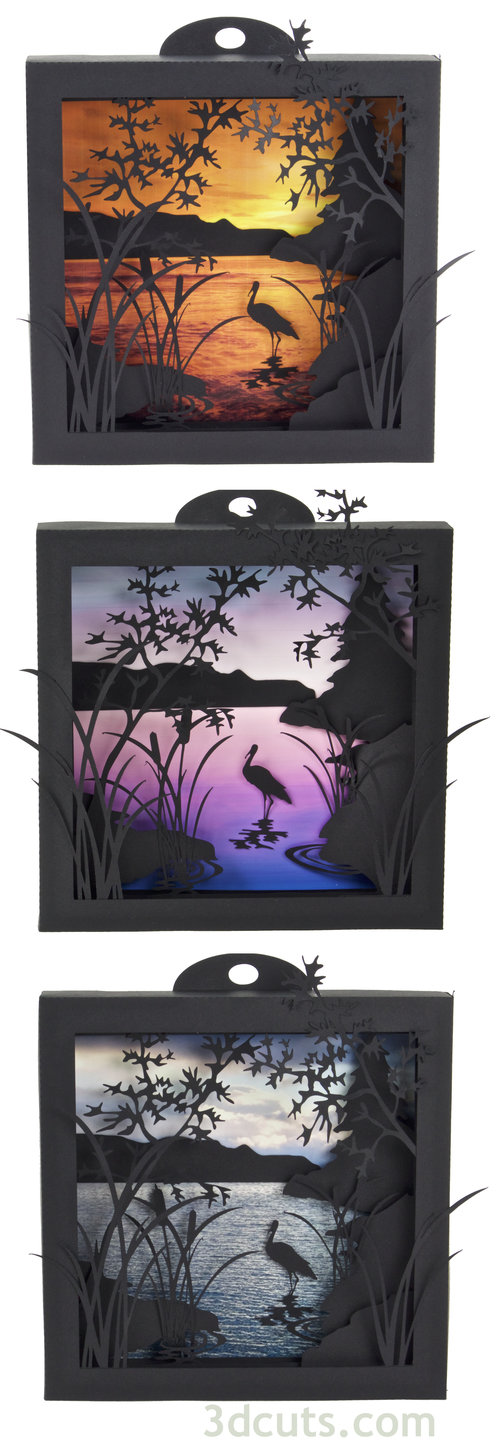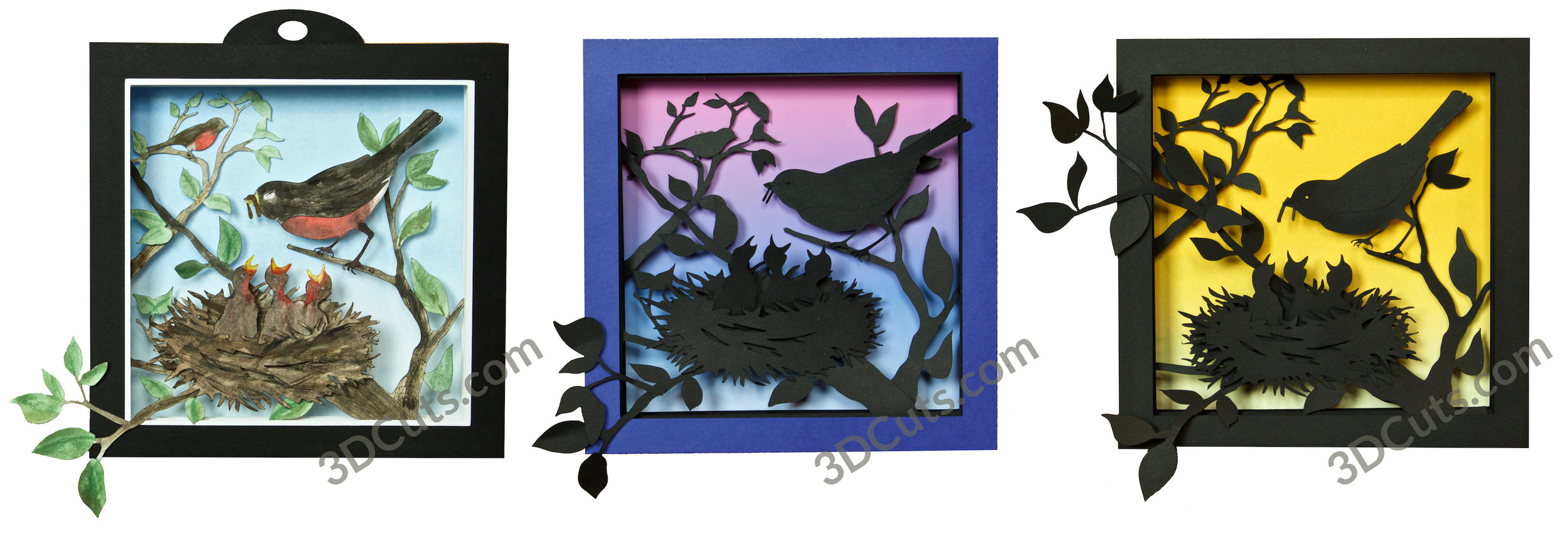Lighthouse Shadow Box - Tutorial
Project Description
Scroll down for link to video tutorial.
This tutorial is for the 4 layer Lighthouse shadow box designed by 3Dcuts.com. The process is similar to many of the 4 layer shadow boxes I have designed.
This shadow box is about 6 1/2" square when complete. It comes with an optional hanger if you want to hang it on the wall. It is about 7/8" thick and can also stand on a shelf.
The impact can be dramatically changed by using different background papers. The download from 3d cuts comes with 1 sky/ocean to print or you can choose your own. there are also other skies available here.
The assembly is easy and basic 3d construction. The cutting of the file is more advanced because there are some fine cuts and requires some skill.
Cutting File is here.
Supplies needed:
Cutting File available here from 3dcuts.com.
8.5 x 11" card stock - I used the 65lb Cardstock from Recollections
Adhesive - I use Scor-Tape, Art Glitter Glue, and glue dots although other adhesives would work.
Scotch tape
Back Ground paper: Be creative- Paper needs to be cut to 6 1/4" square.
Tweezers
Inkjet printer (optional)
Major Parts Sizes:
Each layer is grouped to fit on 8.5 x 11 paper- Sizes are grouping accordingly.
Layer 1 with hanger - 8.2647" w x 10.1589" h
Layer 2 plus parts - 7.8291" w x 10.1978" h
Layer 3 plus parts - 7.3327" w x 10.2158" h
Layer 4 plus parts - 8.1965" w x 8.1965" h
Jpg image of sky -8.37” w x 8.37” h
Expand all files for Sil Store download - 16.9” w x 20.7441 h” (SIL Store download ONLY)
Links to supplies on Amazon:
Steps for completing the Lighthouse Shadow Box:
Special Note: I update the instructions online. Check here for adjustments and additional information. Don't just rely on the pdf file that comes with the download. Learned hints are added to the the tutorial.
1. Download the cutting files for your cutting machine here from the 3dcuts.com store. The download from 3dcuts comes with one sky file. Those downloading from the SIL store will need to get the skies separately from 3dcuts here.
2. Load the files into your cutting software following the steps for your cutting machine.
3. Prepare the files:.
For the Silhouette:
From the SIL Store: Important! If you downloaded your cutting file from the SIL store you will need to expand it before ungrouping. (This ONLY for Silhouette users that downloaded the file from the SIL store.) Do a proportional expand and expand the file to 16.9” w. The height should automatically go to 20.7441”. The file is grouped by 8.5. x 11” cutting pages. Ungroup the file and regroup each 8.5” x 11 group. Cut each group according to the color displayed. Note the one gray piece in Layer 3.
SIL Files from upload SVG purchased from 3dcuts.com:
The SVG files may need to be turned into cutting files. Click here for detailed steps on how to use SVG files on your Silhouette. http://www.3dcuts.com/tutorial-upload-svg-silhouette
DXF files can be opened in the basic edition of Silhouette Design Studio but often require modifications. I recommend using the Designer Edition and using svg files. DXF files do not always maintain file sizes and you may need to adjust according to sizes noted above.
For Cricut Explore: Here is a guide for importing into Cricut Design Space. http://www.3dcuts.com/tutorial-adding-3dcuts-files-to-cricut
For Brother ScanNCut: The svg files will need to be transferred to files for your particular machine. You can change SVG files to FCM files at http://www.canvasworkspace.com/ or Google "How to import SVG files into a ScanNCut" for links to tutorials.
4. Cut the files.
All black pieces are cut from card stock. There is one tiny gray piece in layer 3. Don’t miss it.
The ocean sky scene should be printed full size (8.37” square) on photo paper from your inkjet printer. It is larger than necessary - you will cut it down after printing.
Here are the various pieces you will be cutting out. It requires 4 pieces of 8.5 x 11” card stock.
Hints on cutting details:
Use a good blade. I have found the Silhouette Premium blade to be well worth the money for those of you using Silhouette.
A mat in good condition is also important. I use the Nicapa mats from Amazon Nicapa Cutting Mat (Affiliate Link). You need to use one that still has a lot of stick to it. It helps hold the paper, prevent tearing and assists in separating.
I find settings vary by blade but I use the premium blade, set for heavy card stock and modified on the Silhouette to a depth of 4, speed of 4 and pressure of 33. You can start there but you will probably have to vary it for your blade.
It can help to slow the speed down on the more complex cuts.
Background paper:
Here you can be creative or you can print the file enclosed.
I have created skies by doing a water color wash, creating a gradation on the computer, acrylic paints, or buying cloud paper. I have used photos of skies I took with the camera and printed on my inkjet printer.
There is 1 sky included with the download from 3dcuts.com to be printed on an inkjet printer.
It is not included if you purchase through the Silhouette Online store. You can purchase a variety of skies directly from 3dcuts.com here.
6. Assembly
The assembly steps are detailed in the video below. Here is the url. https://youtu.be/jCpATzPdWM0
©2019 Marji Roy, 3dcuts.com
After you make this shadow box please share with other crafters via facebook, instagram or pinterest. Also, if interested, you can send a photo to me. I like to add photos below of creative approaches by other crafters. That way we can all learn from each other.
Monique Mienokje made this file but used a sky from one of my sky collections. She also used cardstock with a white core. It really creates a different effect. I generally avoid the card stock with the white core but I like the definition it added to this design.
If you enjoyed making this shadow box visit my page of nature inspired shadow boxes for many additional files from all the seasons. http://3dcuts.com/shadow-boxes-nature-themes








